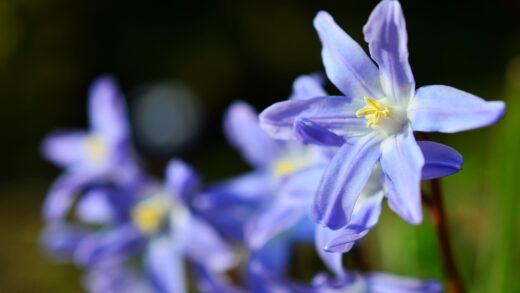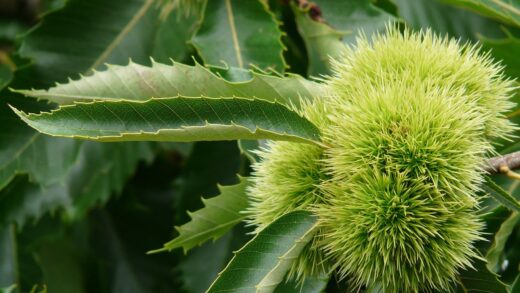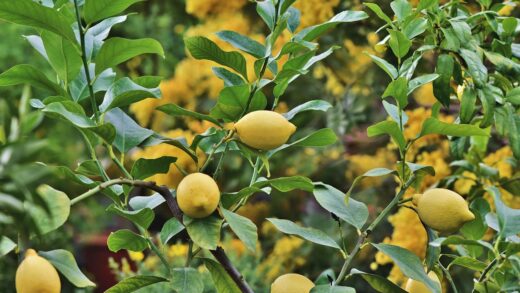As a plant originating from the Mediterranean region, lavender has adapted remarkably well to drier conditions, meaning its water needs are lower than those of many other garden plants. This characteristic makes it an ideal choice for water-saving gardens and drought-tolerant plant beds. However, for the plant to grow healthily and flower abundantly, it is crucial to understand the proper irrigation technique and its needs at different stages of its life cycle. The foundation of successful lavender cultivation is avoiding overwatering, which causes the most common problems for the plant, such as root rot and fungal diseases. Therefore, well-draining soil and careful irrigation are essential for the long-term vitality of lavender.
The natural water requirements of lavender
The root system of lavender is deep and extensive, which allows it to absorb water from deeper layers of the soil. This morphological feature explains the plant’s drought tolerance and why it can survive prolonged periods of water scarcity. In its natural habitat in the Mediterranean, lavender thrives in a sunny, warm climate and in well-draining, often calcareous soil, where uneven rainfall distribution has forced the plant to develop deeper-reaching roots. Consequently, the most important aspect during cultivation is not to overwhelm the plant with unnecessary water. Excessive watering leads to a lack of oxygen for the roots, which stresses the plant and makes it vulnerable to diseases.
For optimal development, it is most important that the soil dries out between waterings. This is particularly critical for young plants that do not yet have an extensive root system. The frequency of watering must always be adjusted to the specific local conditions, including soil type, climate, and the age of the plant. For example, watering may be needed more frequently in sandy soil and less frequently in clay soil due to differences in drainage. It is important that water does not remain on the plant’s leaves for extended periods, as this can also contribute to the development of fungal infections.
Understanding lavender’s water needs also involves knowing the stages of its development. In the first year after planting, the plant requires more water to strengthen and stabilize its root system. At this time, it is advisable to water more regularly but always in moderation to keep the soil slightly moist. After the first year, the plant will be much more resistant to drought, and the frequency of watering can be significantly reduced.
The optimal irrigation strategy, therefore, balances the plant’s minimal water needs with the risk of overwatering. Lavender’s natural adaptation to drought does not mean it needs no water at all, but rather that we must be smart and careful when irrigating. The goal is to keep the root zone moist but never waterlogged. The amount and frequency of watering depend on the plant’s maturity and environmental conditions, so careful observation is key to success.
More articles on this topic
The correct technique for irrigation
When watering lavender, the most important aspect is to use the correct technique. Never water the plant from above, directing water onto its leaves and flowers, as this moist environment provides an ideal breeding ground for fungal diseases such as botrytis (gray mold). The best method is direct watering of the root zone, for example, with drip irrigation or by using a watering can close to the soil. This technique ensures that water goes directly to the roots while the upper part of the plant remains dry. The leaves and stems of lavender are protected by a waxy layer against evaporation, but they can easily become diseased if they are too wet.
Choosing the right time to water is also crucial. The most ideal time is early morning when the sun is not yet too strong. This gives the plant time to absorb water throughout the day, and any excess moisture on the soil surface can evaporate before cooler night temperatures set in. Evening watering should be avoided, as the soil and plants remain wet overnight, which also increases the risk of fungal infections. Watering in the afternoon sun is also not recommended, as the water evaporates quickly, and the plant cannot absorb it effectively.
The frequency of watering should always be adjusted to the soil’s moisture content. For lavender, the rule is to water infrequently but deeply, rather than frequently and shallowly. Deep watering encourages roots to grow deeper, which further increases the plant’s drought tolerance. Shallow watering, on the other hand, results in a shallow root system that is less resistant to water scarcity. It’s important to check the soil moisture before each watering; the top few centimeters of the soil should be dry before you water again.
When cultivating lavender, well-draining soil is the most important prerequisite. Lavender does not tolerate standing water. If the soil is clayey and has poor drainage, it’s worth loosening the soil with sand or small pebbles, or creating a raised bed. For container-grown lavender, make sure the pot has drainage holes at the bottom and use a special, well-draining soil mix for cacti and succulents. Container plants may need to be watered slightly more often as the soil dries out faster.
More articles on this topic
Water needs in the plant’s life cycle
Lavender’s water needs differ at various stages of its life cycle. The most critical period is the planting and rooting of young plants. In the first year, the root system of seedlings is not yet developed enough to effectively absorb water from deeper soil layers. In this stage, regular but moderate watering is crucial to help the roots grow and the plant to strengthen. The soil should be kept slightly moist, but never constantly wet, as this can lead to root rot. The frequency of watering also depends on the weather; more frequent watering may be needed in hot, dry weather.
After the plant has established itself, from the second year onwards, lavender’s water needs decrease significantly. Mature plants have a deep root system that allows them to withstand drier conditions. At this stage, overwatering is the biggest risk. Watering is only necessary after prolonged periods without rain, or if the plant shows signs of water deficiency. Such signs can include wilting leaves or drooping flowers. Even then, watering should be deep to encourage the roots to grow deeper.
During the flowering period, the water requirement of lavender increases slightly, especially if the weather is dry and hot. For abundant flowering and optimal production of essential oils, the plant needs sufficient moisture. However, it is still important to avoid excessive watering in this stage and always monitor the condition of the soil. After flowering, in late summer and autumn, watering should be gradually reduced as the plant prepares for its dormant period. In the autumn and winter months, lavender needs little to no watering, especially if the soil receives natural rainfall.
During the wintering of lavender, particularly for container plants, the water requirement is minimal. The soil should be almost completely dry in winter so that the roots do not freeze. Frozen, wet soil can easily lead to the destruction of the root system. By reducing autumn watering, we prepare the plant for its winter dormancy and prevent root rot. In mild winter periods, if the soil has completely dried out, a light watering may be justified, but this only applies to container plants; outdoor lavender does not need it.
Preventing overwatering and preserving the health of lavender
Overwatering is one of the most common mistakes with lavender, which can cause numerous health problems. Excess water around the roots displaces air, leading to a lack of oxygen. This process weakens the plant and makes it susceptible to root rot and fungal diseases, such as fusarium or botrytis. The first signs of overwatering are yellowing or browning leaves and drooping shoots that wilt despite the soil being moist. At this point, the plant’s root system is already damaged and unable to absorb water.
The most important tool for preventing overwatering is proper soil preparation. Lavender prefers sandy, gravelly, and well-draining soils. Before planting in clayey, compacted soil, it is worth improving the soil structure with sand, small pebbles, or compost. This ensures that excess water drains away and does not stagnate in the root zone. The creation of raised beds is also an excellent solution to the problem of drainage, especially in wetter climates. For container-grown plants, the right soil mix and drainage holes are essential.
The frequency of watering should always be adjusted to the current weather conditions. In hot, dry weather, the soil dries out faster, so more frequent watering may be necessary, but in cooler, rainy periods, it can be almost completely omitted. The best method is to regularly check the soil moisture. To do this, simply stick your finger into the soil a few centimeters deep. If the soil is still moist at this depth, do not water. In the case of lavender, “too little” water is generally better than “too much.”
In addition to proper watering, other factors also contribute to maintaining the health of lavender. Ample sunlight, good air circulation around the plant, and proper pruning are also crucial. Dense foliage retains moisture more easily, which increases the risk of fungal diseases. Therefore, it is important to prune the plant once a year after flowering to maintain its shape and health. Overall, caring for lavender is about attention and observation; if you pay attention to the plant’s signals and environmental conditions, you can enjoy its beautiful, fragrant flowers for many years.


















